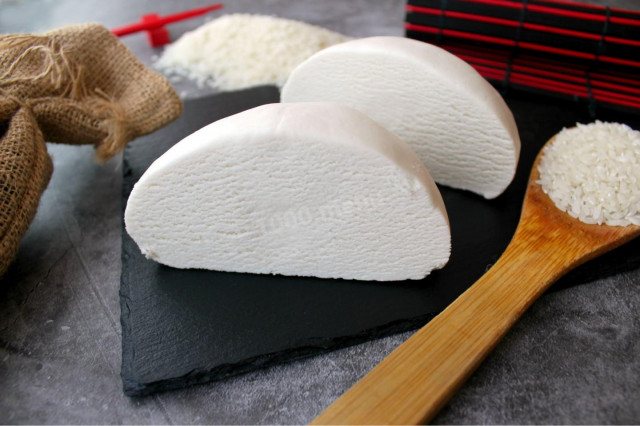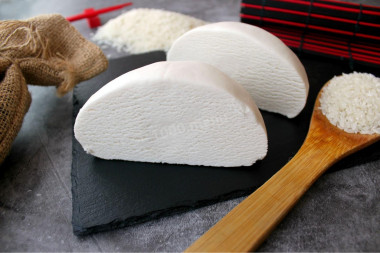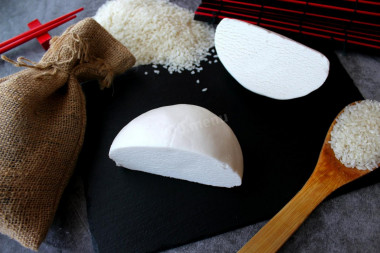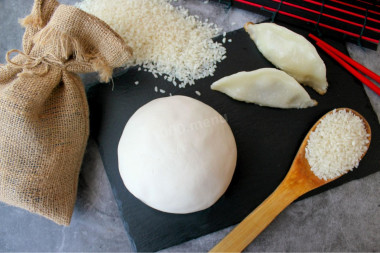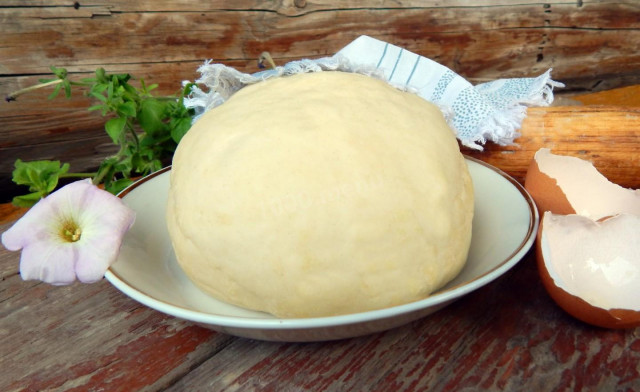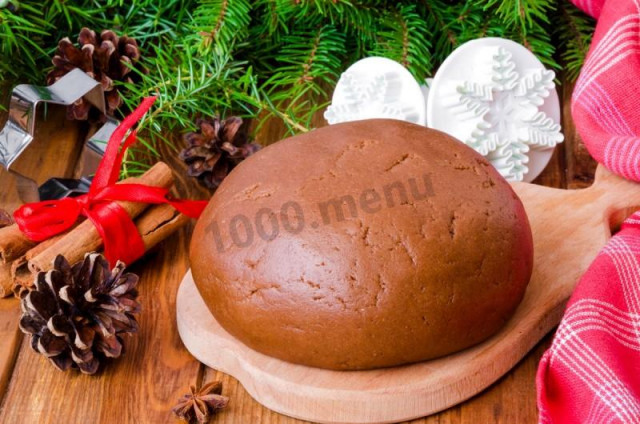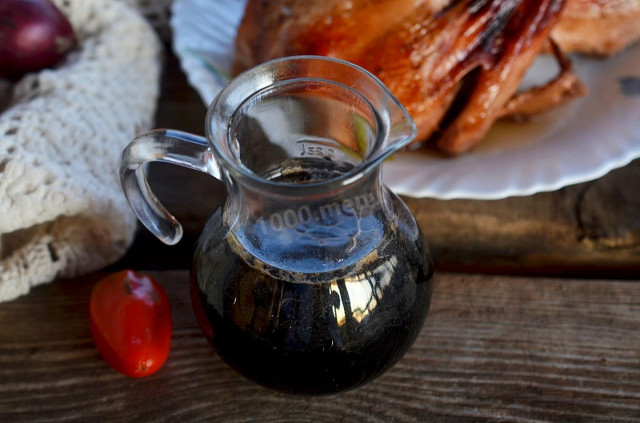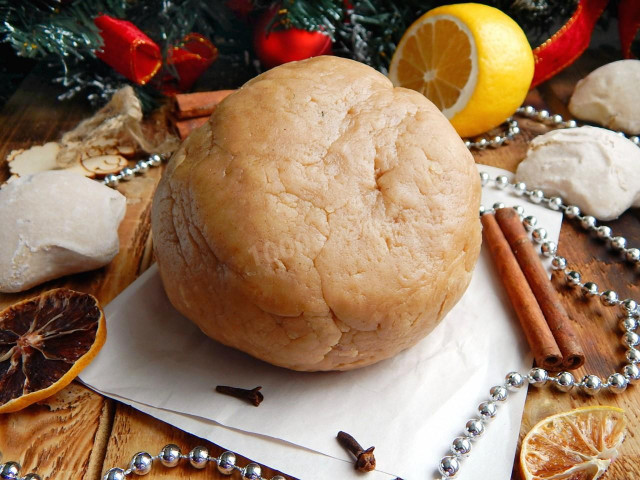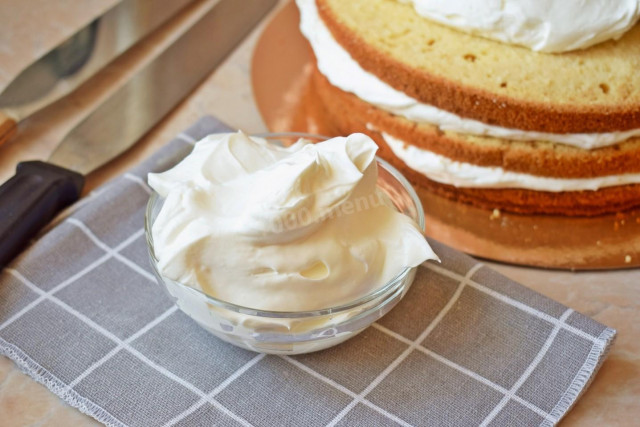Composition / ingredients
Step-by-step cooking
Step 1:
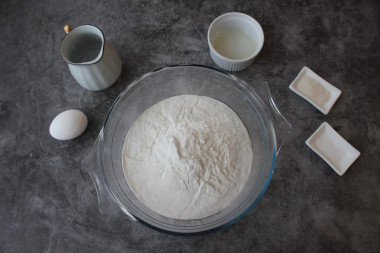
How to make rice dough? Prepare all ingredients. In this recipe, I used white rice flour from ordinary rice, chicken egg of category C1, refined vegetable oil. If desired, white flour can be replaced with brown rice flour from brown rice.
Step 2:
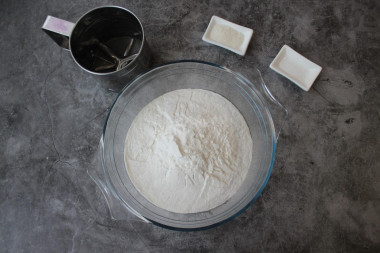
First of all, sift rice flour through a sieve into a bowl. Due to sifting, the flour will be filled with oxygen, which will make the dough more tender and soft, and it will also remove unnecessary impurities that may end up in rice flour. Then add granulated sugar and salt to the sifted flour and use a whisk to lightly mix all the dry ingredients.
Step 3:
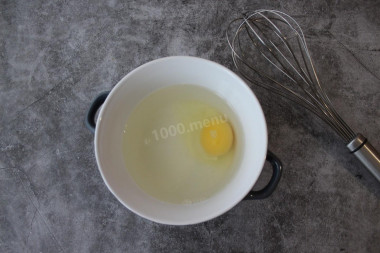
In a small bowl, beat in a chicken egg, pour in water at room temperature and whisk with a whisk. The egg mass should be homogeneous. How to knead rice dough?
Step 4:
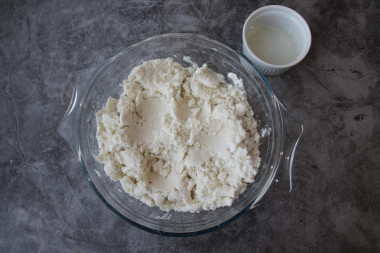
In the center of the sifted flour with salt and sugar, make a recess into which pour the beaten egg water. Lubricate your hands with vegetable oil and start mixing the ingredients with your hands. At first, the dough will crumble a lot, individual lumps will form, but you need to continue kneading the dough, greasing your hands with oil. When the dough somehow comes together, transfer it to the work surface and continue kneading for another 15 minutes. The dough should stop crumbling.
Step 5:
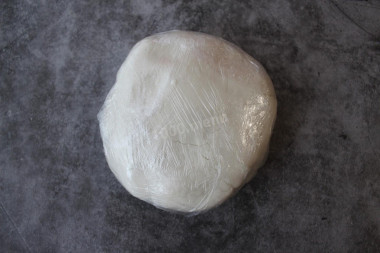
Form a ball from the dough and wrap it several times with cling film. Cover the packed dough with a towel and let it rest for 20 minutes.
Step 6:
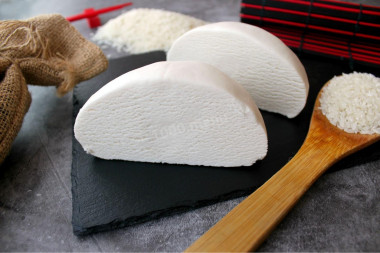
During this time, the dough will become more elastic and acquire a very interesting texture, which you see in the photo in the section. The rice flour itself gives the dough friability, I form such a pattern.
It's hard enough to work with the test. I decided to make Japanese gyoza dumplings from it. You will not be able to roll out a large layer of dough, the dough cracks and breaks. Therefore, it is necessary to roll the dough into a sausage first, and then divide this sausage into small blanks. Put one blank on a food film, cover it with another food film and roll out a blank of rice dough on top of the film with a rolling pin into a circle. Remove the top food film, put the filling in the center of the rice circle and connect the edges of the circle with the bottom food film. If you pinch the edges of the dumplings only with your hands, the dough will crack.
You will not be able to beautifully secure the edges, for example, with a pigtail. All the "beauty" will crack and break.
By the way, be sure to cover all the blanks and molded dumplings with a film so that the dough does not chafe
To make the dough less crumbly and easy to work with, I recommend using rice flour together with wheat flour in a ratio of 1:1.
Be sure to wash the eggs before use, as even the seemingly clean shell may contain harmful bacteria. It is best to use food detergents and a brush.
For cooking, it is better to use filtered or bottled water that is neutral to taste. If you use tap water, keep in mind that it can give the dish an unpleasant characteristic taste.
Calorie content of the products possible in the dish
- Chicken egg - 157 kcal/100g
- Egg white - 45 kcal/100g
- Egg powder - 542 kcal/100g
- Egg yolk - 352 kcal/100g
- Ostrich egg - 118 kcal/100g
- Granulated sugar - 398 kcal/100g
- Sugar - 398 kcal/100g
- Vegetable oil - 873 kcal/100g
- Salt - 0 kcal/100g
- Water - 0 kcal/100g
- Rice flour - 356 kcal/100g

